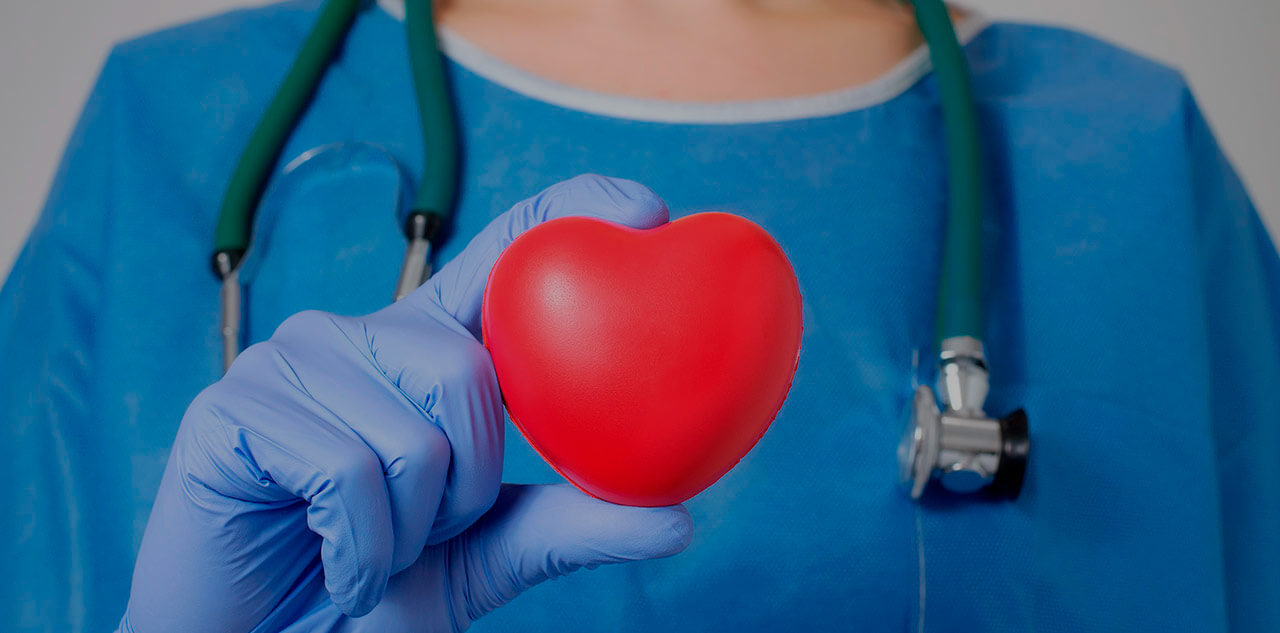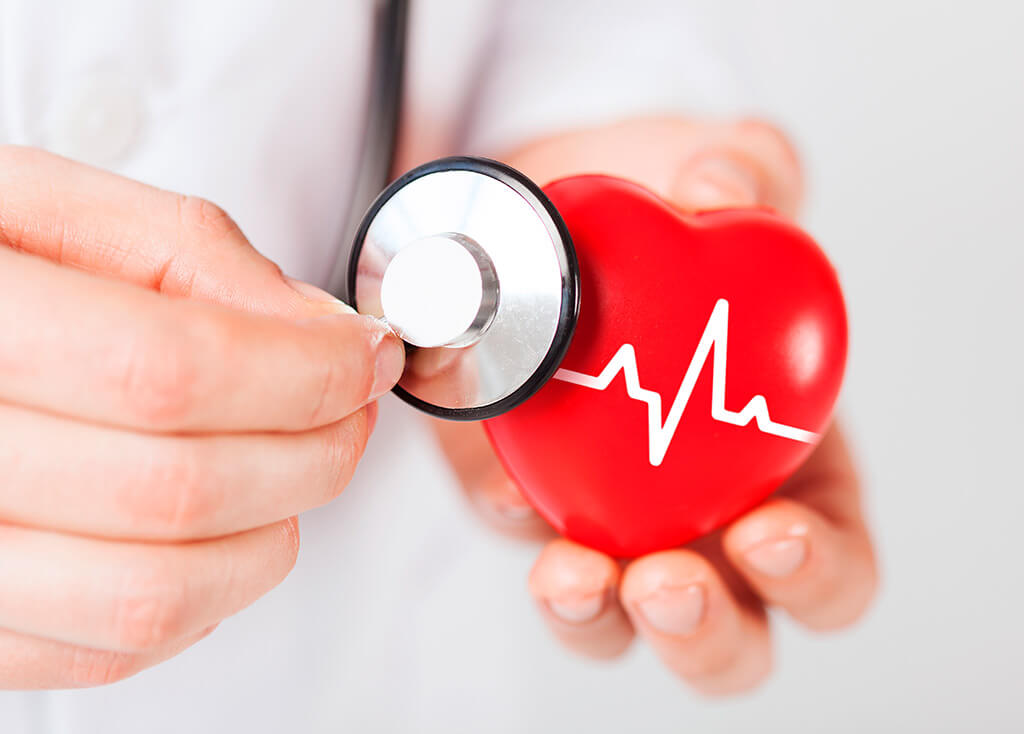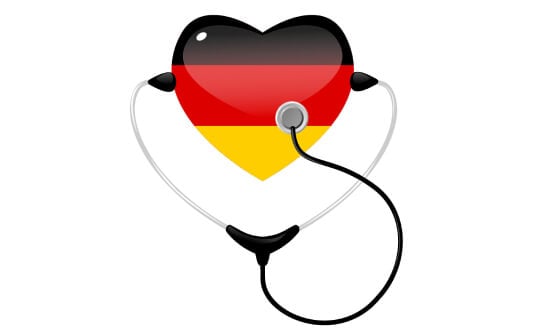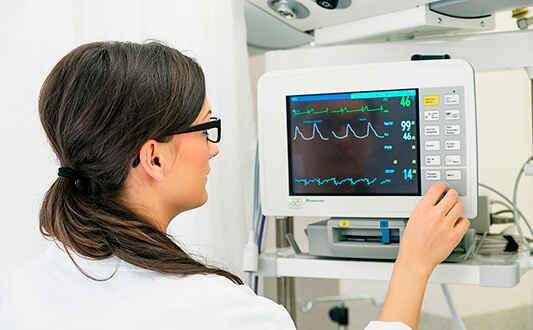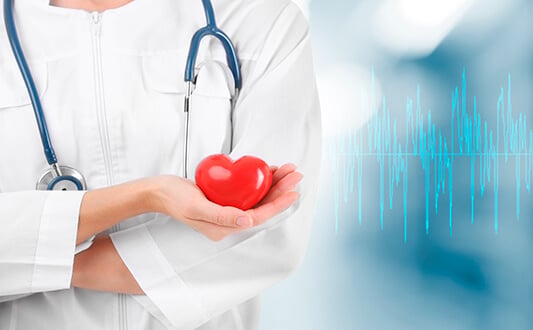Heart is one of the essential organs, which maintains life of the whole body. It beats up to 100 000 times every day in order to supply each tiny cell with oxygen-enriched blood. Under the certain circumstances normal structure of the heart and main blood vessels can be damaged. It may happen not only in adults, but also in infants and even before the birth (in fetus). The condition when anatomical peculiarities of the heart and nearby blood vessels affect blood circulation is called heart defect. Unfortunately, heart defects are not rare conditions. For example, congenital heart defects are found in approximately 1% of all newborn babies in USA, and 25% of these children have critical damages that need to be treated during the first year of life.
Heart defects revealed in adults are called acquired heart defects or valvular heart disease. This state is usually a consequence of primary disorder (pathology of connective tissue, immune or rheumatic disease), but it requires additional treatment, sometimes even surgical one. Understanding of the nature, causes and risks of acquired and congenital heart defects plays great role in revealing the condition and timely initiation of the necessary therapy.
Content
- Normal heart structure – basis of normal function
- Are all heart defects the same?
- What leads to heart defect development?
- Why are heart defects dangerous?
- What should I do in case of heart defect suspicion?
Normal heart structure – basis of normal function
To understand what an acquired or congenital heart defect is we should take a close look at normal heart anatomical and physiological properties. Almost whole heart consists of myocardium – strong muscle, which contracts constantly and automatically, providing the pump function of the heart. Despite common origin, myocardium of different parts of the heart is not the same. Inner space of the heart is divided by the wall, septum, into right and left parts. Further, each part consists of two separate chambers – the atrium and the ventricle. To move blood through the vascular system the heart uses its right and left parts in a different way. Right atrium and ventricle are responsible for collecting the blood from the body. This blood is deprived of oxygen because it is used by tissues and organs for the vital processes during flowing through the organism. Large superior vena cava and inferior vena cava are the final vessels that pass venous blood to the right atrium. After that the whole volume of blood from the right side of the heart is moved to the lungs in order to obtain necessary oxygen from the air. Pulmonary artery, which takes origin in the right ventricle, is the only vessel to transport the blood at the necessary point. Blood flow from the right side of the heart to the lungs and back is called pulmonary, or lesser, circulation.
Once blood is saturated with oxygen in the lungs, it returns to the left part of the heart – left atrium and ventricle. To be more precise, pulmonary veins collect oxygenated blood and deliver it to the left atrium. The next point on the blood pathway to the oxygen demanding organs is the left ventricle, which is connected with the largest artery of the human body – aorta. Myocardium of the left ventricle is really impressive and strong, as it pumps all the oxygen-enriched blood through the aorta to all parts of the body. Flow of blood from the left side of the heart to the rest of the body and back to the right atrium is called systemic circulation.
The main force, that makes the blood move through the arteries and veins, is myocardium contraction, but it is not the only important factor. We should also mention heart and vessel valves, which are located between heart chambers or between the ventricle and blood vessel. Healthy valves totally resist blood pressure changes and prevent blood from moving in a wrong direction. Successful blood flow and efficient delivering of oxygen to organs and tissues are possible only in case of coordinated work of the myocardium and heart valves, normal size of heart and vessels and structural integrity.
Are all heart defects the same?
All types of heart defects have the same feature – they can interfere normal blood flow, change its direction or speed. Nevertheless, pathology may arise in different parts of the heart and neighboring vessels.
To explore this question in a greater detail we can divide all acquired and congenital heart defects into few groups:
- Heart defects with obstructed blood flow. In this condition heart valves or large blood vessels (e.g. aorta, pulmonary artery) become narrow, restricting blood flow and making myocardium to contract harder in order to push blood through the vessels. This finally results in enlargement of different heart chambers and exhaustion of myocardium. Such heart defects include pulmonary and aortic stenosis, mitral and tricuspid stenosis. In the most complicated cases valves are solid and don`t have any hole for blood to pass through. Pulmonary and systemic circulation are impossible in this case, so the condition becomes life-threatening.
- Heart defects with openings in the septum between right and left parts of the heart (septal defects). As it was already mentioned, right part of the heart contains oxygen-poor blood, while left part of the heart is full of oxygen-rich blood. Mixing these blood types via hole in the septum leads to diminished oxygenation of tissues and organs. Such heart defects include atrial and ventricular septal defects. Atrial septal defects, such as patent foramen ovale, may be asymptomatic and thus require no treatment. Ventricular septal defects are always more severe and require surgical intervention.
- Heart defects related to abnormalities of heart valves. As it was mentioned above, heart valves may become narrow (this situation is called stenosis) or even lose ability to pass blood at all (this situation is called agenesia), which leads to obstruction of blood flow. Other pathologic variant implies leaking of the valve, when it doesn't close tightly enough and passes blood backwards after contraction of ventricles (this situation is called regurgitation). In this situation myocardium needs to work twice harder in order to provide sufficient blood flow. The most widespread heart defects of this group are mitral and tricuspid insufficiency, aortic valve insufficiency.
- Heart defects related to abnormalities of heart development and signs of fetal blood circulation. Due to various reasons certain parts of the heart may fail to develop in a proper way. For example, people with hypoplastic left heart syndrome have relatively healthy right side of the heart and weakened left side of the heart, which is not able to work productively. Other example is patent ductus arteriosus. Ductus arteriosus connects aorta and the pulmonary artery, as fetal lungs don`t enrich blood with the oxygen. This blood vessel is normally present before birth and should close right after it.
- Complex heart defects. Such heart defects combine features of different pathologies and usually need more individual and sophisticated treatment (e.g. tetralogy of Fallot).
What leads to heart defect development?
Immediately after diagnosing pathology of the heart we primarily concentrate on treatment and this is totally reasonable. Nevertheless, patients and their relatives are always curious about most possible causes of the disease. Sometimes this helps in preventing the same condition in other family members. Due to great diversity of possible causes and pathologic mechanisms it is appropriate to divide all risk factors into two groups: causes of congenital heart defects and causes of acquired heart defects.
Causes of congenital heart defects include the following:
- Gene or chromosome disorders. Genes are the structural parts of chromosomes that determine normal development of tissues and organs. Broken genes contain wrong information and mislead tissues of the heart in their development. In addition, number of chromosomes plays vital role – additional chromosomes with excessive genetic material affect normal formation of the heart and vessels as well. Such forms of congenital heart defects run in families – from parents to children. Other example of genetically determined pathology of the heart is Down syndrome. More than half of all newborns with this condition is diagnosed with congenital heart defects. Unfortunately, genetic causes can`t be avoided, but we have chance to reveal them early and correct heart condition in advance.
- Taking certain medications during the pregnancy. Pregnancy limits number of drugs that can be used for treatment of concomitant disorders, as some chemicals significantly influence fetus development. Such medications include anticonvulsants (used to treat epilepsy), lithium, exogenous female hormones, and isotretinoin (used to treat acne). Action of these drugs is the most dangerous during the first weeks of pregnancy, when a woman may not know about her pregnancy. Usually, dangerous drugs have analogs, which are safe for pregnant women.
- Smoking, using alcohol or illegal drugs. As it was confirmed by descriptive clinical trials and practical experience, ethanol and nicotine increase child’s risk of having a heart defect. For example, smoking is mainly linked to septal defects. Influence of these substances is significant during all pregnancy.
- Viral infections. Some viruses have high affinity to embryonic cardiac tissues and affect exactly this organ. The most common pathologic agent from this group is rubella virus (German measles), which is responsible for pulmonary vessels stenosis and septal defects. Critical point of rubella virus influence is the first trimester of the pregnancy. The good news is this infection can be avoided by means of vaccination.
- Diabetes mellitus. Being diagnosed with type 1 or type 2 diabetes mellitus, especially in case of bad control of the disease, increases risk of having child with congenital heart defect. The reason is high blood sugar worsens state of epithelial and myocardial cells, so they are not able to form normal heart structures. Remarkably, gestational diabetes (transitory state, directly connected with the pregnancy) generally doesn`t increase such a risk.
Acquired (valvular) heart defects arise at a mature age and shouldn`t be mixed up with late diagnosed congenital heart defects.
Causes of valvular heart defects include the following:
- Age-related changes. Usually these are caused by natural changes in the connective tissue – degeneration, calcification and lack of valvular flexibility. Aging may affect myocardium as well, reducing its strength and contracting ability, but such condition is not considered heart defect. Heart defects from this group include aortic stenosis, mitral and aortic insufficiency.
- Acute rheumatic fever is the most widespread cause of heart defects in young adults. Rheumatic process directly involves heart valves, causing there local inflammation. As a consequence, valves change their properties and lose ability to work normally. Usually this results in mitral and tricuspid stenosis, pathology of the aortic valve.
- Infection. Some bacteria (e.g. streptococci, enterococci, staphylococci) and viruses (herpesvirus, cytomegalovirus) are able to affect heart directly damaging myocardium and valves at the same time. This process involves all valves and thus may cause all types of heart defects.
- Genetic syndromes. Certain syndromes (e.g. Marfan syndrome) change connective tissue and lead to the development of heart defects in adults. Babies with such syndromes usually have no cardiologic deviations; pathology reveals itself during growing up.
- Secondary damage due to concomitant conditions (heart failure, myocardial infarction, pulmonary hypertension). Such states can impair valve function indirectly.
Why are heart defects dangerous?
The first, and the most obvious, danger of having a heart defect consists in abnormalities of physiologic blood flow. Depending on the localization and degree of the defect, condition of the patient varies from totally normal asymptomatic condition to severe disturbances of development in children or strong restriction of physical activity in adults. Unfortunately, this is not the only possible harmful effect. Heart defects are highly likely to cause complications, which may arise during months or years after the start of initial treatment.
Special attention should be paid to the following:
- Disturbances of the heart rhythm (arrhythmias). Different chambers of the heart contract in coordination with each other in order to provide effective work and sufficient blood flow. The main condition of coordinated myocardium work is normal electrical activity of the heart, as only electrical impulses are able to influence the heart muscle in a proper way. Abnormal anatomical structure of the heart may interfere with conduction paths of electrical activity and thus influence heart rhythm. In such circumstances the heart starts beating too fast, too slowly or irregularly. In the most complicated cases severe arrhythmias without proper treatment may cause sudden cardiac death.
- Heart infection (endocarditis). Literally, endocarditis is bacterial or viral infection of the inner lining of the heart chambers (endocardium); usually it doesn`t involve myocardium, but influences state of the heart muscle indirectly. Normal heart is protected from pathogenic agents by few factors, including immunity, continuous blood flow and structure of the endocardium. Heart defects give bacteria and viruses chance to affect healthy tissue due to changes in the blood flow direction and intensity. Other danger is having artificial (prosthetic) heart valve after surgical treatment. Such valves are really helpful in correcting even the most life-threatening conditions, but they don`t have any natural protective mechanisms, unfortunately. Nevertheless, risk of developing endocarditis may be lowered in this case by prescribing ongoing antibiotics.
- Stroke. Stroke is a death part of the brain due to lack of blood supply and, consequently, deprivation of oxygen. Heart defects increase the risk of clot formation in the cardiovascular system. In addition, pathologically changed heart valves can allow a blood clot to pass the heart and reach the brain. Another risk factor of clot formation is having heart arrhythmia, which often accompanies heart defects.
- Heart failure (congestive heart failure, to be more precise). We speak about heart failure when the heart is not able to pump sufficient amount of blood through the vascular system. This results in psychomotor development delay in children or significant lowering quality of life in adults. General weakness, edema, and shortness of breath are usual symptoms of heart failure. Certain heart defects, usually congenital ones, lead to heart failure development in the relatively short period of time. Valvular heart defects in adults worsen general state gradually, as the body tries to fix disturbances (e.g. by increasing volume of the myocardium).
- Pulmonary hypertension. Once the left side of the heart is not strong enough to pump all the oxygen-rich blood to tissues and organs, some blood remains in the left atrium and ventricle. This means that new blood, constantly coming from the lungs, doesn`t find enough space in the heart chambers. Consequently, blood stays in the lungs, which causes trouble breathing. In the most complicated cases pulmonary edema arises – this life-threatening condition requires urgent medical help.
- Secondary problems with heart valves. In case heart defect initially involves only septum or vessels, secondary valvular lesions may arise in absence of qualified treatment. At first heart valves work with excessive effort in order to normalize blood flow, but such overload finally damages them.
What should I do in case of heart defect suspicion?
Heart defects may be suspected before the birth (during prenatal examination of the fetus), in newborns, young adults and people of mature age. No doubt, symptoms and complaints in all these groups will have certain peculiarities, but the tactics will be common – proceeding to thorough diagnostic examination and individual treatment, if necessary. Careful examination by means of current diagnostic equipment is the first step to revealing the most intricate details of the heart structure and elaborating the most suitable treatment plan for each case. Another important factor is specialization and practical experience of the doctor – he/she must be an expert in heart defects diagnosis and treatment. Based on clinical condition and results of the examination, doctor may advice medicinal treatment or surgical intervention in combination with comprehensive rehabilitation.
Nowadays, people are not restricted in choosing healthcare professional. It is possible to apply for treatment by best doctors in native country and even more – worldwide. All information about qualification and success rate of doctors, especially surgeons, is available online or in professional printed journals. When we speak about diagnosis and treatment of heart defects, particularly by means of cardiosurgery, country of the first choice is Germany. German surgeons perform the most complicated interventions and save thousands of patients every year. The country is always ready to help people from other countries. The only problem is applying directly to the desirable hospital will put you in the end of long queue of international patients. This is natural, as German citizens have higher priority to receive high-technology medical attention. In addition, administrative workers, who receive these applications, may have difficulties with medical documents, as some information is clear only for doctors.
Most appropriate option of arranging cardiologic examination and treatment abroad is using help of company Booking Health. Booking Health is the medical tourism company, which annually helps thousands of patients with heart defects in receiving treatment abroad.
Booking Health offers help in such significant aspects as:
- Recommending the best doctor and clinic for examination and following treatment
- Booking an appointment on the convenient date
- Providing you with transfer, interpreter and medical coordinator, if necessary
- Preparing for you all the medical reports and further recommendations
- Providing help in follow-up examination or rehabilitation, if necessary
- Providing help in further communication with your treating physician
To start planning your treatment you should leave the request on the web-site of Booking Health. Our patient case manager or medical advisor will contact you the same day to discuss all the details. Aim of our work is to help you in improving and maintaining your health.
Choose treatment abroad and you will for sure get the best results!
Authors:
This article was edited by medical experts, board-certified doctors Dr. Nadezhda Ivanisova, and Dr. Bohdan Mykhalniuk. For the treatment of the conditions referred to in the article, you must consult a doctor; the information in the article is not intended for self-medication!
Our editorial policy, which details our commitment to accuracy and transparency, is available here. Click this link to review our policies.
Sources:
ECR - European Cardiology Review
American College of Cardiology
Read:
Why Booking Health - questions and answers
How to make right decision when choosing the clinic and specialist
7 reasons to trust to the rating of clinics on the Booking Health portal
Don't know where to start?
Contact Booking Health